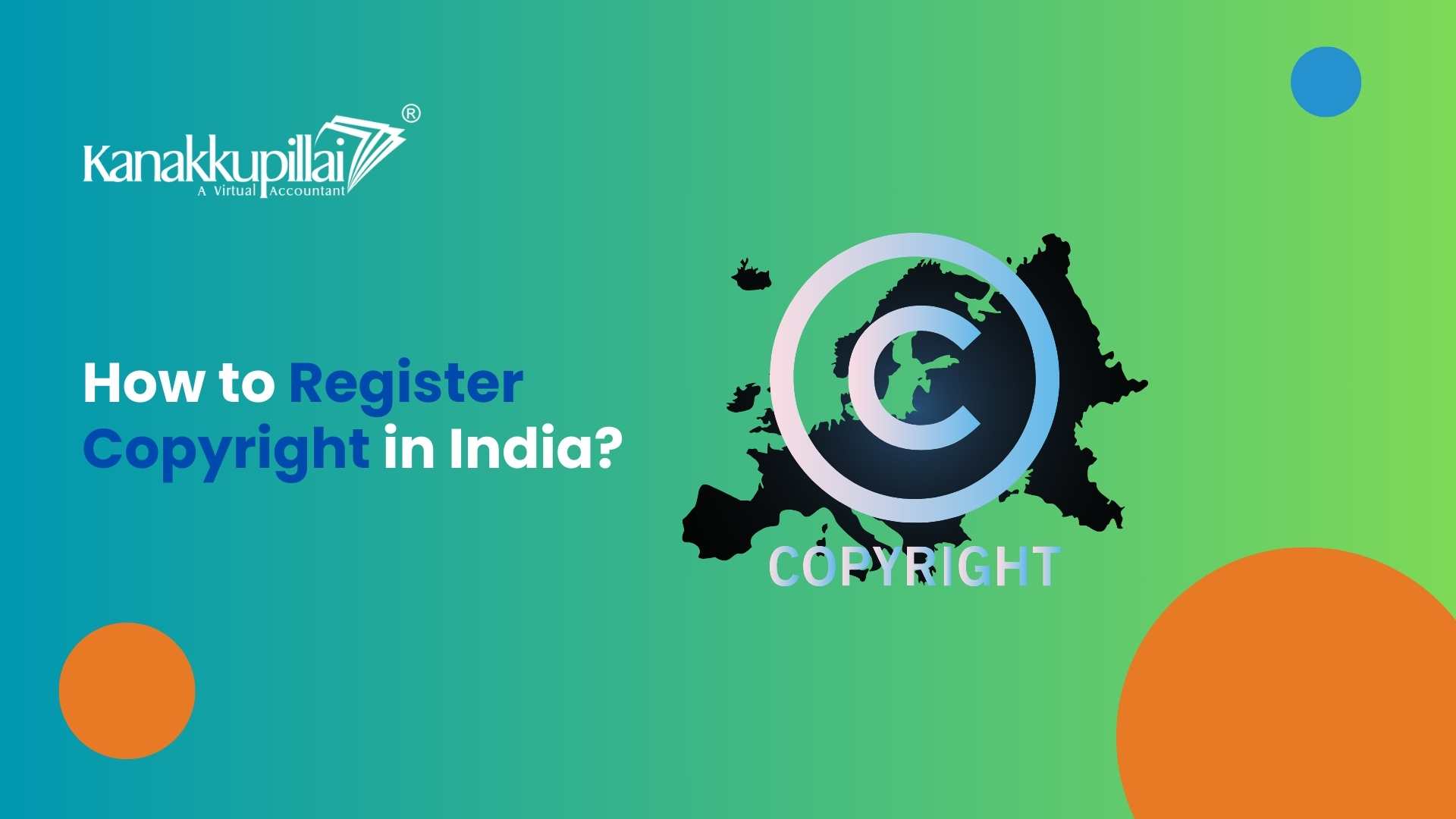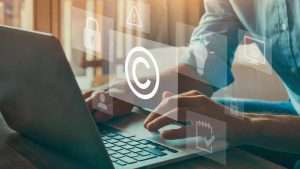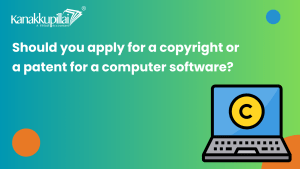![]()
Copyright, a legal principle that provides protections on the works produced by inventors, allows creators to have some sort of control over how their creative properties are used, shared, and reproduced. This basic understanding of copyright is just the tip of the iceberg of its significance. The article goes into depth on how, according to copyright, an additional step can be taken to further restrict the rights of use regarding a certain piece of work.
Copyright registration will enable the content that you claim to be the creator of to be recorded in Washington, D.C., where It will remain until decades after you have passed. This will add greater protection to your creative works, giving you additional control over your creative properties. No matter who you are or what was created, this article will surely provide information you might not have known before.
Copyright: A Legal Entitlement
Copyright is a set of exclusive rights granted by the government’s law to the intellectual property owner for a limited period in exchange for publishing the work on the Internet. This implies that the ownership of the creation is yours. You or anybody with your permit cannot reproduce or duplicate the creation. Copyright law provides the person who created the work exclusive rights to the work for a certain amount of time. Eventually, the work will become public for anybody to use without permission from the owner.
What Can You Copyright? Understanding the Categories
Copyright is necessary to ensure the protection of many types of creative works and a variety of creations. The main office for copyright and trademarks in the United States manages a complex and diverse system of copyright categories established for a wide range of creative works. The six separate, seemingly non-related subclasses reveal the necessity for copyright as they differ vastly in form.
- Literary Works (Excluding Computer Programs): This specific class of literary distinctions includes inconsistencies of fictional creations such as the department of knowledge, hymns, essays, season and non-seasonal department of knowledge, and one more.
- Musical Works: Melodies, lyrics, and sheet music are protected by copyright law, for the most part under the category of musical compositions.
- Artistic Works: The various things that artists create, like paintings, sculptures, drawings or other types of objects, are protected by copyrights.
- Cinematography Films: Additionally, copyright also applies to films. Essentially, a film is considered an audiovisual work.
- Sound Recordings: What kinds of documents were created in the past and are today? This is a question asked by the audio recording category. Music, speeches, and other sound creations are all filed under this category.
- Computer Programs, Tables, and Compilations: Copyright laws are used to protect what makes human-created categories and things from being required by anyone else. Examples of this type of thing would be Software, statistics and indexes.
The Copyright Law Landscape
These copyrights were primarily governed and upheld by the “COPYRIGHT ACT of 1957,” which has been marched on under the strict eyes of time and seen in some amendments.
The Vital Role of Copyright Registration
Copyright registration becomes crucial in an infringement situation, as your registration will be used to officially and legally establish your ownership over the work. Upon registration, as a copyright owner, you have the power to control how your work is made available to the public and reproduce, translate, adapt and modify the work.
Why Opt for Copyright Registration?
You aren’t required to register your work for copyright protection, but I suggest you do so for some good reasons. Registering your work makes it easier to prove you own it and disrupts anyone who thinks they can get away with using your stuff. Copyright gives creators a basic set of rights in their work and means their creations can’t be copied for a certain period of time. This sense of safety in their work might encourage them to create more to create more in their future projects.
The Copyright Symbol: ©
Once your copyright is registered, you can display the copyright symbol, the year your book was published, and your name. Displaying the copyright symbol tells people that the book is copyrighted. This can be helpful because it returns some of the teeth taken away from authors if they have to sue. The courts control only what you registered with the copyright office and filed before the infringement, not what you wrote before the infringement got to court.
Legal Rights of a Copyright Owner
When you own a copyright, you have many exclusive rights. These rights include:
- Claiming Authorship: You can regard your work of publication of the paternity claim over the creation.
- Reproduction and Storage: The copyright owner in a work has the exclusive right to reproduce the work in any tangible medium of expression (including digital) from which it can be perceived, reproduced or otherwise communicated, either directly or with the aid of a machine or device.
- Control Over Publication: You can decide where and where not to publish your work, exercising the publication right.
- Public Performance and Communication: The owner may publicly perform or communicate the work to the public. You also have the authority to create translations or adaptations of the original work.
- Protecting Reputation: If there is a possibility that an act, decision or practice, or its publication, may significantly harm your reputation, then you may take legal and other such appropriate preventive action before the harm is caused.
- Selling or Transferring: Transference of copyright may include a transfer of ownership grant of exclusive or non-exclusive licensing. In any case, the copyright owner transfers all or a portion of his/her rights to another.
These legal rights empower copyright owners to manage and protect their creative works while allowing them to control their intellectual property.
The Duration of Copyright Protection
Following copyright registration, copyright protection typically endures for the author’s lifetime plus an additional 60 years after the author’s death. This duration ensures that the creator’s work remains safeguarded and continues to benefit their heirs or assigned rights holders for a substantial period.
Conditions for Filing a Copyright Application
For artistic works, upload them in pdf/jpg format. For Sound Recording Works, upload it in MP3 format. For Literary/Dramatic, Music, and Software* Works, upload in pdf format, ensuring the file size is less than 10 MB. For Software, upload a PDF containing at least the first ten and last ten pages of the source code, or the entire source code if under 20 pages, with no redacted or blocked-out sections.
Obtaining Copyright Registration: Step-by-Step Process
Securing copyright registration involves a systematic process that includes the following key steps:
Access the Official Website: Visit the Official website of the Copyright Office. Log in with your valid User ID and Password. If you still need to register, click on “New User Registration.” Make sure to note down your User ID and Password for future reference.
Submission of Application: An application containing all the necessary particulars and a statement of the particulars must be prepared in the prescribed format (FORM XIV).
- After logging in, click the “Click for Online Copyright Registration” link. The online “Copyright Registration Form” requires completion in four steps:
- Fill out Form XIV, then click “SAVE” to save your entered details, and proceed to Step 2.
- Prepare a scanned copy of your signature for uploading.
- Complete the “Statement of Particulars” and click “SAVE” to save your entered details.
- Fill out the “Statement of Further Particulars. This form applies to “LITERARY/DRAMATIC, MUSICAL, ARTISTIC, AND SOFTWARE” works. Click “SAVE” to store your entered details and proceed.
Make Payment: This application and the requisite fees outlined in Schedule 2 of the Copyright Act are then forwarded to the copyright registrar. Use the Internet Payment Gateway to make the required payment.
Moreover, it should be noted that a separate application is filed in case of every distinct work undertaken by the court, and every application is signed by such of the applicant and his Advocate as hold a Vakalatnama or a Power of Attorney(PoA) for the applicant.
Dairy Number Issuance: A lay writer will substantiate the application for possible discrepancies if no opposition to the registration is received within thirty days. Should no differences emerge, registration will proceed, and an exemplification will be sent to the registrar for inclusion in the copyright register.
Copyright Objection Handling: Should no objections be lodged during the thirty-day publication period, the application will undergo a more sophisticated investigation for discrepancies by a scrutinizer. If the application can pass this analysis without any findings, then the application will continue toward registration, and an extract will be forwarded to the registrar for entry into the Register of Copyrights.
Objection Resolution: If objections are received, both parties will receive a notification from the examiner outlining the objections. A hearing will be arranged to address these objections.
Application Scrutiny: Following the hearing and the resolution of objections, the scrutinizer will meticulously review the application if applicable. Then, the respective administration body decides to accept or reject the application for its special status; this is all done in myriad ways, such as knowing the person, a letter of request, and recommendations.
Copyright Registration Certificate: When the pertinent power confirms the application (confirms the registration), it will send the written certificate of copyright registration to the owners. Generally, the processing of an application takes about 2 to 3 months.
Checking the Status of Copyright Registration Application
To verify the status of your Copyright registration application, follow these simple steps:
- Visit the website of the Copyright registrar and locate the “Status of Application” section.
- The acknowledgement number alludes to the identifier tied to the submission, which is known as the diary number of the paper you submitted.
- Send this information; you will be notified of your application status upon submission.
Distinguishing Copyright, Trademarks, and Patents
Below is an explanation of the distinctions between copyright, trademark, and patent.
Copyright
Copyright protects works of authorship, such as writings, music, and works of art that have been tangibly expressed. Neither trademark nor patent protects an author’s works as copyrights do. Although we use copyright, trademark, and patent interchangeably, they all serve to protect our intellectual property, but they each protect different aspects of our creative works.
Trademark
A trademark is a distinctively designed word(s) and/or symbol(s) used to identify a business or organization in the marketplace. When you think of a trademark, you often think of a brand as Coca-Cola (brand name) and their logo (brand mark or brandmark); the psychology behind it is more the logo than the name. One of my professors who used to work for them said that if he pulled people off the street, they would recognize the symbol of the brand, but when he showed the brand name, they could care less because they’re loyal to the symbol/brand mark or whatever symbol the brand has, but not loyal to the name. Those are trademarks, and they are different from copyrights.
Patents
Patents are grants that give you the right to exclude others from inventing, making, selling or importing an invention for a limited period, usually 20 years. Some examples of patented include machines, anything that will improve an existing machine or how a machine works, for example, a carburettor that controls the flow of a car, and computed tomography (CT) scanners (doctors use them for diagnosing illness). The CT scanner saves images of particular portions of a patient’s body. As a result, they’re now saved and can be looked at later on different computer monitors. The results of the CT scanner and the carburettor are inventions. Generally, they’re called processes. Patents only cover invention. Copyrights are one kind of intellectual property protection. Trademarks and patents are two other kinds of intellectual property protection.





